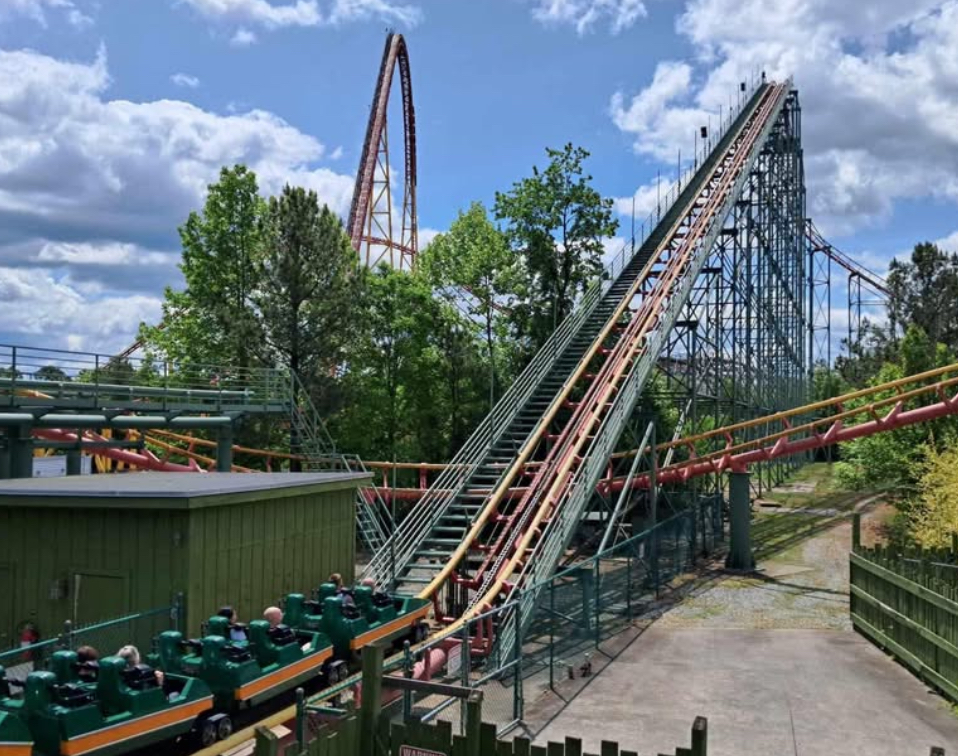On November 2, 2025, the gates of Six Flags America in Bowie, Maryland, will swing open for the last time. After a quarter-century of roller coasters, funnel cakes, and summer memories, the park—once a staple of regional entertainment—will be permanently shutting down. The announcement has left a wave of nostalgia, concern, and reflection not only for locals who grew up with the park but also for the amusement industry at large.
For 25 years, Six Flags America wasn’t just a theme park—it was a cultural touchstone for the Mid-Atlantic. Families from Washington, D.C., Baltimore, and beyond flocked to its gates for adrenaline and escapism. But like many parks navigating post-pandemic economics, shifting entertainment preferences, and rising operational costs, Six Flags America has found itself at a crossroads.
This show isn’t just about what’s closing. It’s about what that closure says. About the evolving meaning of fun, the fragility of institutions once thought timeless, and the challenge of keeping physical entertainment alive in a digital-first age.
A Brief History: From Wild World to Six Flags America
Six Flags America didn’t begin as a headline brand. The site originally opened in 1974 as “Wild World”, a modest animal and water park. In the 1990s, as regional theme parks surged in popularity and Six Flags expanded its footprint, the property was acquired and rebranded, reopening in 1999 under its current name.
What followed was a golden period. The park added major thrill rides like Superman: Ride of Steel, family-friendly areas like Looney Tunes Movie Town, and annual events like Fright Fest and Holiday in the Park. It became a local tradition—accessible, affordable, and full of enough excitement to rival its larger East Coast competitors like Hersheypark and Kings Dominion.
But underneath the surface, cracks were forming. Attendance fluctuated. Ride maintenance lagged. Seasonal staffing challenges grew. And as Six Flags corporate began reevaluating assets in a post-COVID landscape, the Maryland park’s fate started to dim.
Why the Closure Now? Business, Branding, and Bottom Lines
Six Flags has framed the decision as part of a broader realignment strategy—prioritizing markets with higher growth potential and rebalancing resources toward fewer, stronger properties.
In a press release, the company cited “operational inefficiencies, aging infrastructure, and a shifting regional focus” as reasons for the closure. Translation: the park wasn’t hitting the numbers. And in today’s high-cost, high-risk environment, sentimentality no longer guarantees survival.
Analysts point to a few core reasons:
- Declining attendance: Despite attempts to draw crowds with seasonal events and discount passes, foot traffic has decreased over the past decade.
- Capital investment stagnation: The park hadn’t added a new major roller coaster in over a decade, reducing its draw for thrill-seekers.
- Geographic competition: Other parks in the Mid-Atlantic with newer attractions and better infrastructure siphoned off traffic.
- Post-pandemic habits: Families are investing more in travel and digital entertainment than local amusement options.
Impression
The closure of Six Flags America hits deeper than spreadsheets. For many in Maryland, D.C., and northern Virginia, the park was more than a destination—it was a rite of passage.
School trips, summer break outings, teenage first jobs, birthday parties, family reunions—it all happened within those gates. The familiar rumble of roller coasters, the splash of water rides, the overpriced lemonade and glow sticks—all now shifting into memory.
The park was also a cultural bridge. It welcomed a diverse audience and provided a shared space for joy in a region often divided by politics and economics. Six Flags America wasn’t perfect—far from it. But it was consistent. And in a world of constant change, that consistency mattered.
Local Economy and Community Fallout
Beyond nostalgia, the closure brings economic consequences. Six Flags America has been a seasonal employer for thousands, particularly high school and college students in Prince George’s County. Its shutdown will ripple across local vendors, food suppliers, transportation services, and tourism partners.
More broadly, it raises questions about land use and redevelopment. What will become of the sprawling 500+ acre site in Bowie? Will it be sold to developers for commercial use? Turned into mixed-use real estate? Left dormant?
Amusement Parks at a Crossroads
Six Flags America’s closure isn’t an isolated event. Across the country, regional parks are being scrutinized, sold, or shuttered. Meanwhile, destination parks like Disney and Universal are leaning into IP-based mega-attractions, immersive lands, and virtual integrations.
We’re seeing a polarization of the amusement experience: on one end, ultra-high-end escapism; on the other, local parks struggling to compete.
The middle tier—the regional, affordable family park—is under siege.
To survive, parks need:
- Continuous reinvestment in rides and infrastructure.
- Hybrid digital offerings that appeal to tech-native youth.
- Event-driven programming that reengages local communities.
- Operational innovation, including off-season utility and adaptive staffing.
Six Flags America was unable to pivot fast enough. Its closure is both a cautionary tale and a call to action for parks that still rely on outdated playbooks.
What Comes Next: The Park’s Final Season
Between now and November 2, Six Flags America will operate a “farewell season”, with planned events, nostalgic throwbacks, and a final Fright Fest likely drawing massive crowds.
Expect high emotions, long lines, and lots of social media eulogizing. For many, this will be their last chance to ride Superman, to walk through Gotham City, to take a photo with Bugs Bunny.
Already, fan groups are organizing meetups, content creators are planning retrospectives, and collectors are hunting for souvenirs.
The end is coming—but it won’t be quiet.
Reflections: More Than Just a Park
To those outside Maryland, this may seem like just another corporate decision. But to those who grew up within an hour of its gates, Six Flags America was a piece of personal history.
In an age where entertainment is increasingly digital, where memories are stored in phones and algorithms, the park stood as a physical, lived experience. A place where joy was loud, where fear had a seatbelt, and where time, for a few hours, stood still.
Its closure is not just the loss of a park. It’s the end of an era. And for those who knew it, it will always be more than just rides and attractions—it will be remembered as the backdrop of youth, community, and fun.
Thoughts
When the gates close for the last time on November 2, 2025, it will be more than symbolic. It will mark the shrinking of a kind of American tradition—regional parks built not for global fame, but for local joy.
In the face of corporate consolidation and cultural shifts, Six Flags America couldn’t hold. But what it gave—memories, moments, and momentum—will outlive the structure itself.
The rides may rust. The signs may come down. But for the thousands who laughed, screamed, danced, and dreamed inside those gates, Six Flags America will never fully disappear.
No comments yet.








